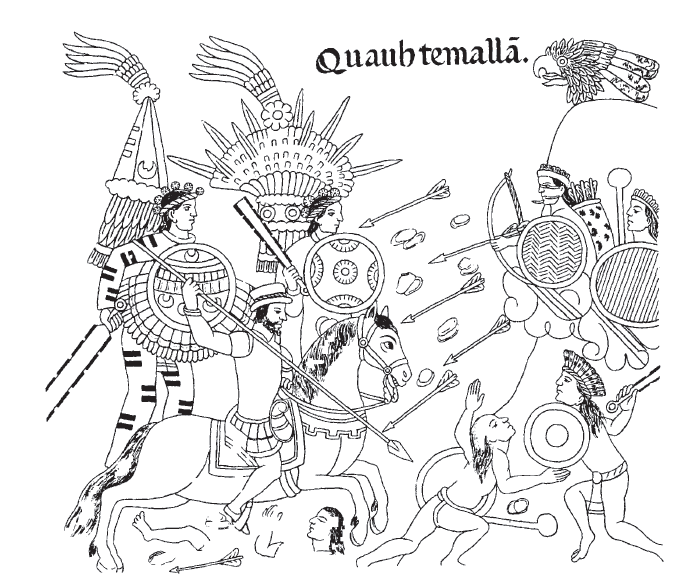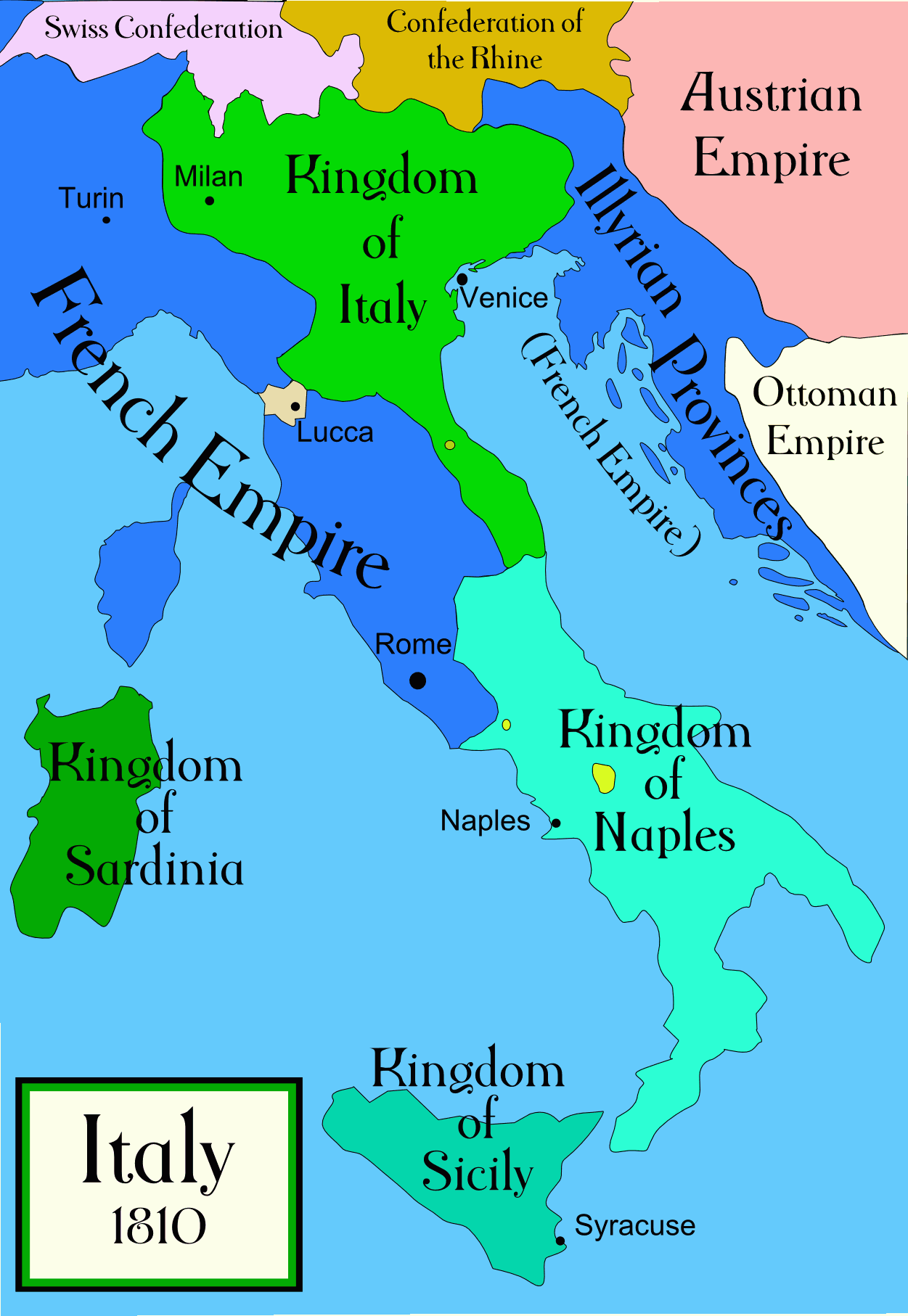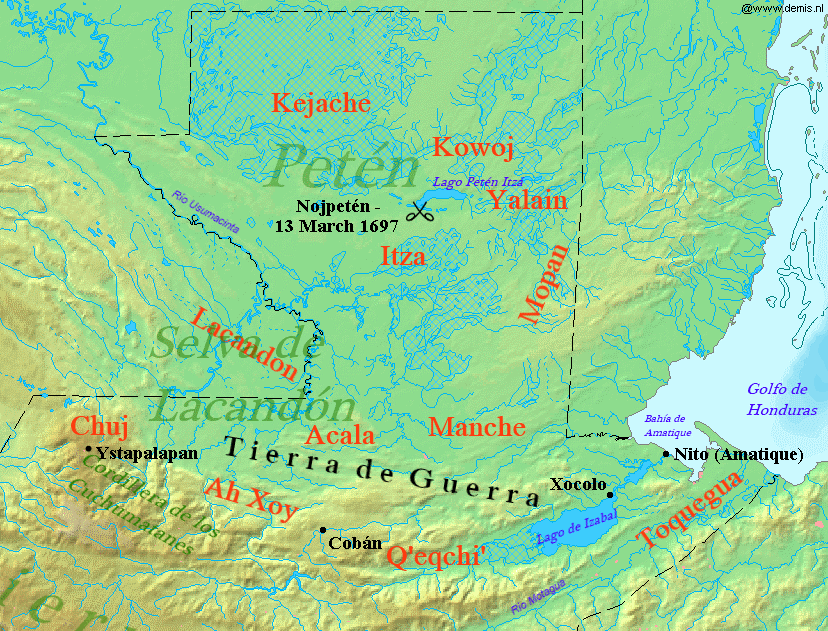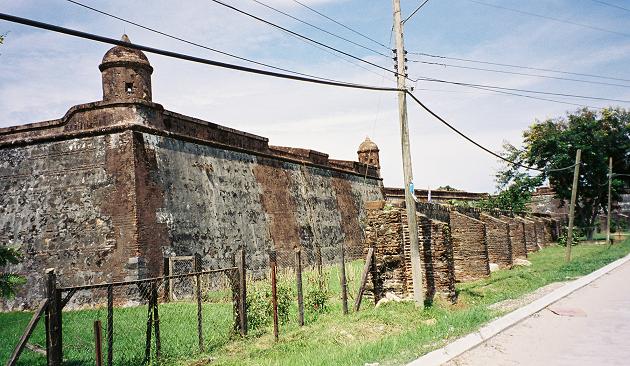|
Guatemala–Spain Relations
Relations between Guatemala and Spain date back to 1524, when the modern territory was Spanish conquest of Guatemala, invaded and conquered by the Spanish. Guatemala achieved its independence in 1821 and established diplomatic relations with Spain in 1863. Both nations are members of the Organization of Ibero-American States and the United Nations. History Spanish conquest The first Spanish troops to arrive to Guatemala were led by Spanish conquistador Pedro de Alvarado in 1524. On arrival to the territory, the Spaniards discovered various peoples of the Maya civilization, Mayan and Nahuas, Nahua cultures. The Spaniards, with help of Indian auxiliaries, indigenous allies and Tlaxcaltec, Tlaxcaltec troops, began to slowly conquer the peoples of Guatemala. The first and major battles involved the Kʼicheʼ people who were defeated in March 1524 and resulted in the capture of the K'iche' capital of Qʼumarkaj. In 1525, Spanish conquistador of the Aztec Empire, Hernán Cortés arrive ... [...More Info...] [...Related Items...] OR: [Wikipedia] [Google] [Baidu] |
Guatemala
Guatemala, officially the Republic of Guatemala, is a country in Central America. It is bordered to the north and west by Mexico, to the northeast by Belize, to the east by Honduras, and to the southeast by El Salvador. It is hydrologically bordered to the south by the Pacific Ocean and to the northeast by the Gulf of Honduras. The territory of modern Guatemala hosted the core of the Maya civilization, which extended across Mesoamerica; in the 16th century, most of this was Spanish conquest of Guatemala, conquered by the Spanish and claimed as part of the viceroyalty of New Spain. Guatemala attained independence from Spain and Mexico in 1821. From 1823 to 1841, it was part of the Federal Republic of Central America. For the latter half of the 19th century, Guatemala suffered instability and civil strife. From the early 20th century, it was ruled by a series of dictators backed by the United States. In 1944, authoritarian leader Jorge Ubico was overthrown by a pro-democratic m ... [...More Info...] [...Related Items...] OR: [Wikipedia] [Google] [Baidu] |
Cristóbal De Olid
Cristóbal de Olid (; 1487–1524) was a Spanish adventurer, conquistador and rebel who played a part in the conquest of the Aztec Empire and present-day Honduras. Born in Baeza, Olid grew up in the household of the governor of Cuba, Diego Velázquez de Cuéllar. In 1518 Velázquez sent Olid to relieve Juan de Grijalva, but en route, a hurricane caused the loss of Olid's anchors, and he returned to Cuba. On January 10, 1519, Olid sailed with Hernán Cortés's fleet, as his quartermaster, and took an active part in the conquest of the Aztec Empire.Diaz, B., 1963, ''The Conquest of New Spain'', London: Penguin Books, He fought at the Battle of Otumba on 14 July 1520, and also took part in the campaign against the Purépechas. During the Siege of Tenochtitlan, Cristóbal was one of Cortés' key captains, playing a critical role in the capture of Xochimilco. Cristobal was the Texcoco camp commander during the trial of Antonio de Villafana, for his plot to assassinate C ... [...More Info...] [...Related Items...] OR: [Wikipedia] [Google] [Baidu] |
First Mexican Empire
The Mexican Empire (, ) was a constitutional monarchy and the first independent government of Mexico. It was also the only former viceroyalty of the Spanish Empire to establish a monarchy after gaining independence. The empire existed from 1821 to 1823, making it one of the few modern-era independent monarchies in the Americas. To distinguish it from the later Second Mexican Empire (1864–1867) under Emperor Maximilian, this historical period is commonly referred to as the First Mexican Empire. The empire was led by former Royal Spanish military officer Agustín de Iturbide, who ruled as Agustín I. The establishment of a monarchy was the initial goal for an independent Mexico, as outlined in the Plan of Iguala, a political document drafted by Iturbide that unified the forces fighting for independence from Spain. Following the signing of the Treaty of Córdoba by the last Spanish viceroy in September 1821, the plan for a Mexican monarchy advanced. Iturbide's popularit ... [...More Info...] [...Related Items...] OR: [Wikipedia] [Google] [Baidu] |
Plan Of Iguala
The Plan of Iguala, also known as the Plan of the Three Guarantees ("Plan Trigarante") or Act of Independence of North America, was a revolutionary proclamation promulgated on 24 February 1821, in the final stage of the Mexican War of Independence from Spain. The Plan stated that Mexico was to become a constitutional monarchy, whose sole official religion would be Roman Catholicism, in which both the ''Peninsulares'' (people born in Spain and residing in Mexico) and the ''Americanos'' (people born in Mexico, that is, the Americas) would enjoy equal political and social rights. It took its name from the city of Iguala in the modern-day state of Guerrero. The two main figures behind the Plan were Agustín de Iturbide (who would become First Mexican Empire, Emperor of Mexico) and Vicente Guerrero, revolutionary rebel leader and later President of Mexico. The Army of the Three Guarantees was formed by the unified forces of Iturbide and Guerrero to defend the ideals of the Plan of Igua ... [...More Info...] [...Related Items...] OR: [Wikipedia] [Google] [Baidu] |
Central American
Central America is a Subregion#North America, subregion of North America. Its political boundaries are defined as bordering Mexico to the north, Colombia to the southeast, the Caribbean to the east, and the Pacific Ocean to the southwest. Central America is usually defined as consisting of seven countries: Belize, Costa Rica, El Salvador, Guatemala, Honduras, Nicaragua, and Panama. Within Central America is the Mesoamerican biodiversity hotspot, which extends from southern Mexico to southeastern Panama. Due to the presence of several active fault, active geologic faults and the Central America Volcanic Arc, there is a high amount of seismic activity in the region, such as volcanic eruptions and earthquakes, which has resulted in death, injury, and property damage. Most of Central America falls under the Isthmo-Colombian Area, Isthmo-Colombian cultural area. Before the Spanish expedition of Christopher Columbus' voyages to the Americas, hundreds of indigenous peoples made thei ... [...More Info...] [...Related Items...] OR: [Wikipedia] [Google] [Baidu] |
Spanish America
Spanish America refers to the Spanish territories in the Americas during the Spanish colonization of the Americas. The term "Spanish America" was specifically used during the territories' Spanish Empire, imperial era between 15th and 19th centuries. To the end of its imperial rule, Spain called its overseas possessions in the Americas and the Philippines "The Indies", an enduring remnant of Columbus's notion that he had reached Asia by sailing west. When these territories reach a high level of importance, the crown established the Council of the Indies in 1524, following the conquest of the Aztec Empire, asserting permanent royal control over its possessions. Regions with dense indigenous populations and sources of mineral wealth attracting Spanish settlers became colonial centers, while those without such resources were peripheral to crown interest. Once regions incorporated into the empire and their importance assessed, overseas possessions came under stronger or weaker crown co ... [...More Info...] [...Related Items...] OR: [Wikipedia] [Google] [Baidu] |
Joseph Bonaparte
Joseph Bonaparte (born Giuseppe di Buonaparte, ; ; ; 7 January 176828 July 1844) was a French statesman, lawyer, diplomat and older brother of Napoleon Bonaparte. During the Napoleonic Wars, the latter made him King of Naples (1806–1808), and then King of Spain and the Indies (1808–1813). After the fall of Napoleon, Joseph styled himself ''Comte de Survilliers'' and emigrated to the United States, where he settled near Bordentown, New Jersey, on Pointe Breeze estate overlooking the Delaware River not far from Philadelphia. Early life and career Joseph was born in 1768 as Giuseppe Buonaparte to Carlo Buonaparte and Maria Letizia Ramolino at Corte, the capital of the Corsican Republic. In the year of his birth, Corsica was invaded by France and conquered the following year. His father was originally a follower of the Corsican patriot leader Pasquale Paoli, but later became a supporter of French rule. Bonaparte trained as a lawyer. In that role and as a politician and ... [...More Info...] [...Related Items...] OR: [Wikipedia] [Google] [Baidu] |
Mexico City
Mexico City is the capital city, capital and List of cities in Mexico, largest city of Mexico, as well as the List of North American cities by population, most populous city in North America. It is one of the most important cultural and financial centers in the world, and is classified as an Globalization and World Cities Research Network, Alpha world city according to the Globalization and World Cities Research Network (GaWC) 2024 ranking. Mexico City is located in the Valley of Mexico within the high Mexican central plateau, at an altitude of . The city has 16 Boroughs of Mexico City, boroughs or , which are in turn divided into List of neighborhoods in Mexico City, neighborhoods or . The 2020 population for the city proper was 9,209,944, with a land area of . According to the most recent definition agreed upon by the federal and state governments, the population of Greater Mexico City is 21,804,515, which makes it the list of largest cities#List, sixth-largest metropolitan ... [...More Info...] [...Related Items...] OR: [Wikipedia] [Google] [Baidu] |
Spanish Conquest Of Petén
The Spanish conquest of Petén was the last stage of the Spanish conquest of Guatemala, conquest of Guatemala, a prolonged conflict during the Spanish colonisation of the Americas. A wide lowland plain covered with dense rainforest, Petén contains a central drainage basin with a series of lakes and areas of savannah. It is crossed by several ranges of low karstic hills and rises to the south as it nears the Guatemalan Highlands. The conquest of Petén Basin, Petén, a region now incorporated into the modern republic of Guatemala, climaxed in 1697 with the capture of Nojpetén, the island capital of the Itza people, Itza kingdom, by Martín de Ursúa, Martín de Ursúa y Arizmendi. With the defeat of the Itza, the last independent and unconquered native kingdom in the Americas fell to European colonisers. Sizeable Maya peoples, Maya populations existed in Petén before the conquest, particularly around the central lakes and along the rivers. Petén was divided into different M ... [...More Info...] [...Related Items...] OR: [Wikipedia] [Google] [Baidu] |
Spanish Empire
The Spanish Empire, sometimes referred to as the Hispanic Monarchy (political entity), Hispanic Monarchy or the Catholic Monarchy, was a colonial empire that existed between 1492 and 1976. In conjunction with the Portuguese Empire, it ushered in the European Age of Discovery. It achieved a global scale, controlling vast portions of the Americas, Africa, various islands in Asia and Oceania, as well as territory in other parts of Europe. It was one of the most powerful empires of the early modern period, becoming known as "the empire on which the sun never sets". At its greatest extent in the late 1700s and early 1800s, the Spanish Empire covered , making it one of the List of largest empires, largest empires in history. Beginning with the 1492 arrival of Christopher Columbus and continuing for over three centuries, the Spanish Empire would expand across the Caribbean Islands, half of South America, most of Central America and much of North America. In the beginning, Portugal was ... [...More Info...] [...Related Items...] OR: [Wikipedia] [Google] [Baidu] |
Catholicism
The Catholic Church (), also known as the Roman Catholic Church, is the List of Christian denominations by number of members, largest Christian church, with 1.27 to 1.41 billion baptized Catholics Catholic Church by country, worldwide as of 2025. It is among the world's oldest and largest international institutions and has played a prominent role in the history and development of Western civilization.Gerald O'Collins, O'Collins, p. v (preface). The church consists of 24 Catholic particular churches and liturgical rites#Churches, ''sui iuris'' (autonomous) churches, including the Latin Church and 23 Eastern Catholic Churches, which comprise almost 3,500 dioceses and Eparchy, eparchies List of Catholic dioceses (structured view), around the world, each overseen by one or more Bishops in the Catholic Church, bishops. The pope, who is the bishop of Rome, is the Papal supremacy, chief pastor of the church. The core beliefs of Catholicism are found in the Nicene Creed. The ... [...More Info...] [...Related Items...] OR: [Wikipedia] [Google] [Baidu] |
Captaincy General Of Guatemala
The Captaincy General of Guatemala (), also known as the Kingdom of Guatemala (), was an administrative division of the Spanish Empire, under the viceroyalty of New Spain in Central America, including present-day Costa Rica, Nicaragua, Honduras, El Salvador, Guatemala, and the Mexican state of Chiapas. The governor-Captaincy, captain general was also president of the Royal Audiencia of Guatemala, the superior court. Antecedents Colonization of the area that became the Captaincy General began in 1524. In the north, the brothers Gonzalo and Pedro de Alvarado, Hernán Cortés and others headed various expeditions into Guatemala and Honduras. In the south Francisco Hernández de Córdoba (founder of Nicaragua), Francisco Hernández de Córdoba, acting under the auspices of Pedro Arias Dávila in Panama, moved into what is today Nicaragua. Moving of the capital The capital of Guatemala has moved many times over the centuries. On 27 July 1524, Pedro de Alvarado declared the K ... [...More Info...] [...Related Items...] OR: [Wikipedia] [Google] [Baidu] |






